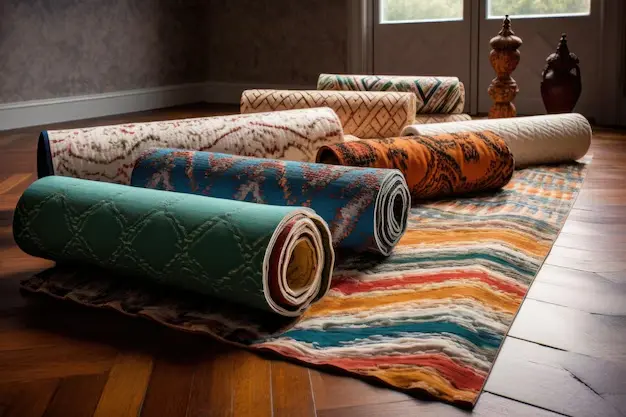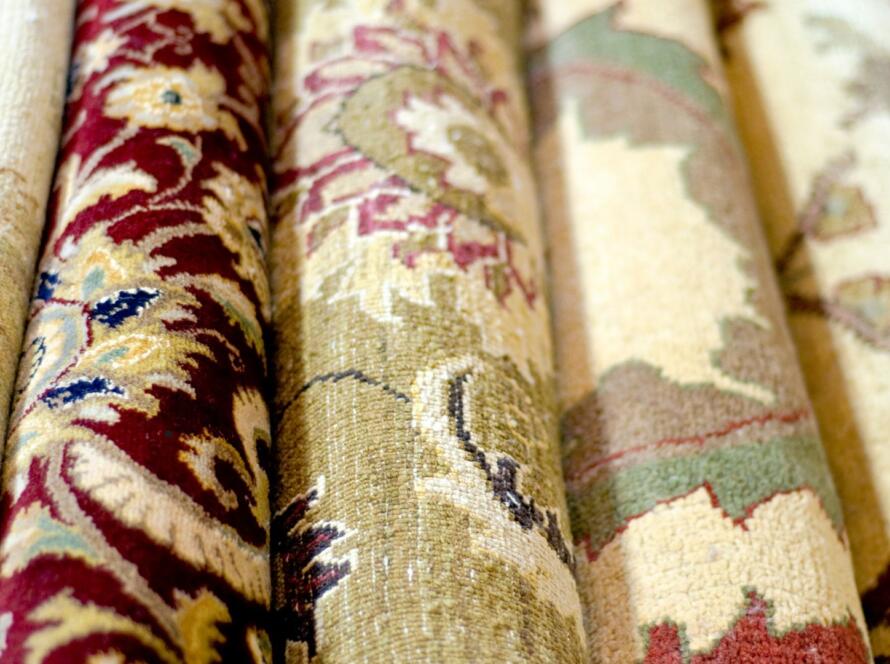When considering the longevity of rugs, various factors come into play, including material, use, and maintenance. Typically, high-quality rugs can last between 10 to 20 years or even longer with proper care. Understanding these elements can help individuals make informed decisions when choosing a rug for their home.
Different materials offer different lifespans. For instance, wool rugs are known for their durability and can withstand wear over time, while synthetic options may not last as long but often come with lower upfront costs.
Homeowners should also consider traffic patterns and upkeep. Regular cleaning and occasional professional maintenance can significantly extend the life of a rug, making it a worthwhile investment for many spaces.
Material Quality and Durability
The material of a rug significantly impacts its longevity. Natural fibers like wool and silk are often regarded for their durability.
| Fabric | Durability | Years |
|---|---|---|
| Wool | High | 10-20 years |
| Synthetic | Moderate | 5-15 years |
| Silk | Medium | 5-10 years |
| Cotton | Low | 3-7 years |
Types of Rugs that Last the Longest:
- Wool Rugs: Known for resilience and stain resistance. They can withstand heavy foot traffic.
- Nylon Rugs: A synthetic option that offers strength and easy maintenance.
- Polypropylene Rugs: Resistant to moisture, making them suitable for outdoor use.
To identify quality carpets, consider the following factors:
- Fiber Quality: Look for rugs made from premium materials.
- Density: A denser pile often indicates a more durable rug.
- Construction Method: Hand-knotted rugs generally last longer than machine-made options.
Sourcing quality rugs involves examining the manufacturer’s reputation, checking for warranties, and consulting expert reviews. Quality materials and proper craftsmanship contribute to a rug’s ability to endure over time.
Design Trends and Consumer Preferences
In 2024, varieties of carpet design feature bold patterns and sustainable materials. Consumers increasingly prefer eco-friendly options that enhance aesthetics without compromising quality.
Trending rugs for 2024 include geometric patterns, vintage looks, and natural fibers. People are drawn to rugs that not only provide comfort but also make a style statement in their spaces.
When selecting a carpet, the question often arises: What is the best grade of carpet for home and office use? Generally, a medium to high-grade carpet is recommended for durability. For home use, options that resist staining and wear are preferred, while office settings may benefit from commercial-grade carpets designed for high traffic.
Current consumer preferences emphasize customization. Many seek unique designs that reflect their personal style rather than mass-produced items. Social media influences these trends, showcasing a variety of designs that cater to different tastes.
In addition, color trends lean towards earthy tones and muted palettes. These choices offer versatility, fitting seamlessly into various interior styles.
With increased awareness of sustainability, consumers prioritize rugs made from recycled materials. This shift not only meets aesthetic desires but also aligns with environmental values.
Overall, the rug market in 2024 reflects a blend of modern design, practicality, and individual expression, catering to a wide range of consumer needs.
Manufacturing and Wholesaling
Manufacturing and wholesaling play crucial roles in the lifespan and quality of rugs. The processes involved in these stages directly impact durability, pricing, and variety available to consumers.
Carpet Wholesalers Overview
Carpet wholesalers act as intermediaries between manufacturers and retailers. They distribute a wide range of products, including residential, commercial, and specialty carpets. Notable in this market is Shivalika Rugs, which offers a diverse selection, including hotel carpets and washable rugs.
Wholesalers benefit retailers by providing bulk pricing, access to unique inventory, and efficient logistics. With a focus on quality, leading companies ensure products meet industry standards. This makes them essential partners for retailers looking to stock high-quality, durable rugs.
Production Techniques
Rug production involves various techniques, including hand-knotting, tufting, and weaving. Each method affects the durability and maintenance needs of the finished product. For instance, Shivalika Rugs utilizes modern machinery alongside traditional craftsmanship to produce durable rugs suited for different environments.
Materials also influence longevity. Companies like Shivalika Rugs supply PVC floor carpets and faux fur options, catering to various consumer preferences. Their expertise in production techniques ensures that rugs not only look appealing but also withstand wear and tear, ensuring a longer lifespan for users.
Choosing the right manufacturing partner is vital for retailers aiming to offer resilient rug options.
Maintenance and Longevity of Rugs
The lifespan of rugs can vary significantly based on their material and maintenance practices. Generally, synthetic rugs last about 5 to 15 years, while natural fibers like wool may last 10 to 30 years or more.
Hand-knotted carpets tend to be more durable. With proper care, they can last several decades. The intricate weaving process uses high-quality fibers, which contributes to longevity.
To ensure longevity, consider the following maintenance tips:
- Regular Cleaning: Vacuum rugs at least once a week to remove dirt and dust.
- Professional Cleaning: Schedule professional cleaning every 1-2 years for deeper maintenance.
- Rotate Regularly: Change the position of rugs to promote even wear and prevent fading from sunlight.
- Use Rugs in Low-Traffic Areas: Placing rugs in less-used spaces can extend their life.
- Address Stains Immediately: Blot spills promptly to prevent permanent damage.
Protecting rugs from excessive sunlight, moisture, and heat sources can enhance their lifespan. Furthermore, choosing high-quality rugs, especially hand-knotted options, ensures durability and resilience over time. By following these care guidelines, one can maximize the longevity of any rug, allowing it to remain a beautiful part of the home for many years.
Selection and Sizing
Choosing the right rug involves both selection and sizing considerations. Various factors impact the decision.
Size Matters
For a living room, the rug size often depends on furniture arrangement. Several options are popular:
- Large Rugs (8×10 ft or larger): Suitable for seating areas, allowing furniture to sit on the rug.
- Medium Rugs (5×8 ft): Works well in smaller spaces or under a coffee table, creating a defined area.
- Small Rugs (3×5 ft): Ideal for entryways or accent pieces.
Placement Guidelines
Rugs can visually anchor a space. Here are some placement tips:
- Ensure at least the front legs of all furniture pieces sit on the rug for a cohesive look.
- Place the rug to align with the room’s layout and focal points, such as a fireplace or television.
Material Selection
The durability of a rug often ties to its material. Common materials include:
- Wool: Offers longevity and comfort.
- Nylon: Resistant to stains and great for high-traffic areas.
- Cotton: Easy to clean but may wear out faster.
Selecting the right size and material can enhance both functionality and aesthetics of a living room. A thoughtful choice contributes to the ambiance and ease of use.
Comfort and Texture
Rugs significantly influence the comfort and texture of a space. They can provide warmth underfoot and enhance the overall ambience of a room.
Tufted rugs are known for their softness. This type of rug is made by pushing yarn through a backing material, creating a plush surface that feels inviting. Their thickness contributes to a cozy atmosphere, making them ideal for living areas and bedrooms.
In addition to tufted rugs, other varieties such as woven and shag rugs also offer distinct textures. Shag rugs, for example, feature longer fibers, which can provide an even softer feel and a luxurious appearance.
When selecting a rug, it’s essential to consider its material. Wool rugs tend to be soft and durable, while synthetic fibers can mimic natural textures. Each material offers a different comfort level and aesthetic appeal.
Textures can also affect how a rug feels underfoot. A thick, plush rug may provide a comfortable walking surface, while a flat-woven rug may feel firmer but can still offer a sleek, modern look.
Ultimately, the choice of rug impacts both comfort and texture, contributing to the overall feel of a room. Selecting the right type ensures that it meets both aesthetic and comfort needs.




